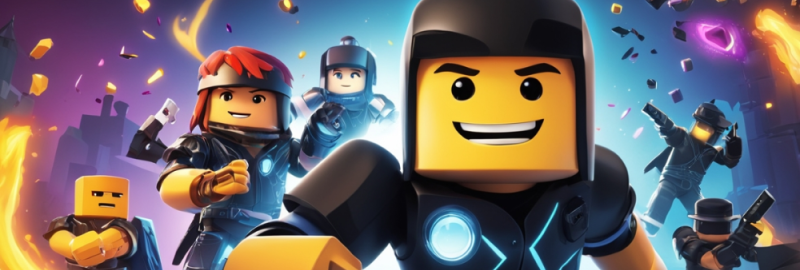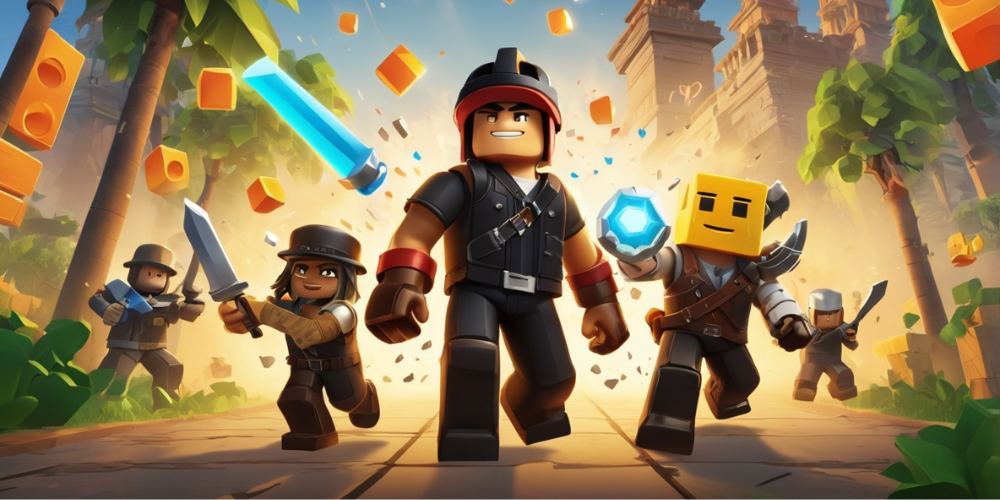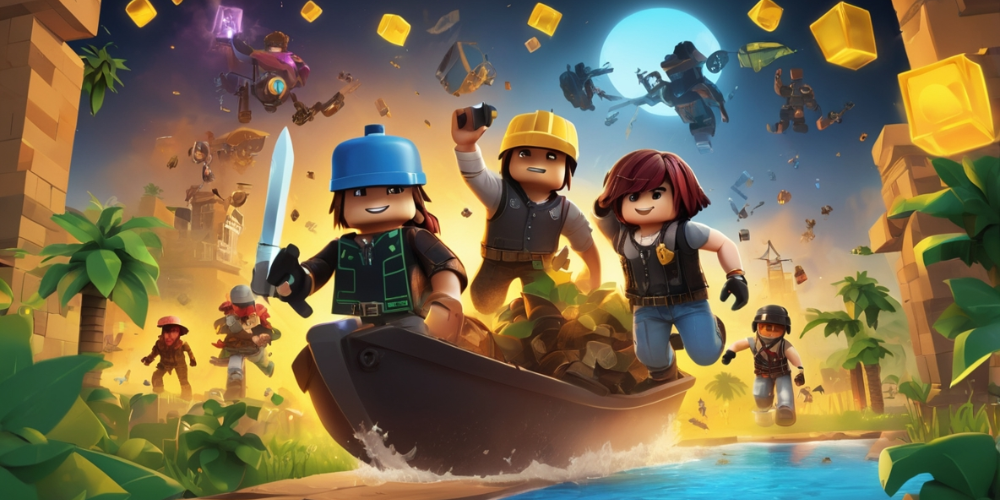
Welcome to the ultimate Roblox guide designed for both beginners and experienced creators! Roblox is more than just a gaming platform; it’s a vibrant community where creativity meets technology. In this guide, we dive into everything you need to know—from creating your account and mastering Roblox Studio to designing captivating games that attract players. With catchy themes and a pithy description for every project, you’ll be ready to pitch your ideas and bring your virtual world to life.
Roblox lets you explore endless possibilities. Whether you want to build an adventure game or a social hangout, the key is planning your preview to hook potential players. Our friendly, step-by-step guide provides useful tips and inspiring strategies to get you started quickly. So, get ready to unleash your creative side and discover how you can transform simple ideas into engaging, fully functioning Roblox games!
Getting Started with Roblox

Creating Your Account and Exploring the Platform
The first step on your Roblox journey is to create a free account. Visit the Roblox website and sign up by following the straightforward registration process. Once you confirm your email address and set up your profile, take some time to explore the homepage. Here, you can see trending games, featured developers, and upcoming events. Not only does this give you inspiration for your own projects, but it also helps you understand what types of games draw large audiences. Enjoy the preview images and catchy titles that many creators use to pique interest, and let these spark your own ideas!
Navigating Roblox Studio
Roblox Studio is the powerful tool behind every game on the platform. It provides a user-friendly environment where you can build your game world from scratch. Start by watching beginner tutorials on the Roblox website or on popular video platforms. Experiment with tools like the terrain editor, model library, and the drag-and-drop interface. Don’t worry if everything seems overwhelming at first—it takes time to become comfortable with the interface. Step by step, you will learn how to design unique environments that not only look stunning but also function smoothly. Practice by replicating simple projects, then gradually advance to more complex designs.
Building Your First Game
Planning and Conceptualization
Before you jump into development, spend time brainstorming and planning. Write down your game idea, draw sketches, or create a mind map that outlines the storyline, characters, and environment. Think of a catchy theme that can grab attention immediately—this will be crucial when you create your preview image and description later on. A well-constructed plan makes your build process more organized and reduces the risk of feeling overwhelmed. Remember, a clear roadmap will help you focus on essential features and create a game that stands out in the crowded Roblox world.
Start Simple, Build with Confidence
When tackling your first project, simplicity is your friend. Start by laying out basic shapes and structures to form your game’s world. Roblox Studio allows you to utilize drag-and-drop features to add objects, set their properties, and create basic terrains. As you progress, add more detailed elements gradually. This approach not only makes it easier to manage your project but also builds your confidence as you see tangible progress. Every masterpiece starts with a simple idea; give yourself permission to experiment and learn from every step, no matter how small the improvements might seem.
Learning the Scripting Language
To bring your game to life, learning a bit of scripting is key. Roblox uses the Lua programming language, which is celebrated for its simplicity and flexibility. Incorporating scripts can allow you to create dynamic gameplay features such as character movements, interactive environments, and real-time effects. Start with basic tutorials that guide you through simple scripts like triggering animations or creating game logic. As you become comfortable with Lua, you can experiment with more advanced features. This learning curve might seem challenging at first, but small consistent efforts will lead to impressive results, enhancing your game’s functionality significantly.
Enhancing Your Game’s Appeal
Customizing Graphics and Sounds
The look and feel of your game are crucial for captivating audiences. Invest time in selecting the right textures, colors, and special effects that match your game’s theme. In addition, high-quality sound effects and background music can transform a simple game into an immersive experience. Experiment with different audio tracks and visual themes until you find the perfect balance. This creative process not only improves the gameplay experience but also makes your game preview more attractive—a key factor in engaging potential players before they even click “Play”.
Engaging the Community
Roblox thrives on community engagement. Use forums, social media groups, and in-platform commenting features to share your progress and gather feedback. Connecting with other developers can provide you with fresh ideas and help you overcome challenges. Participating in community events and collaborations can also boost your visibility within the platform. By listening to other creators and players, you can continuously refine your game and address issues early. Remember, a game that resonates with its audience is more likely to become popular and enjoy long-term success.
Monetizing Your Game
One of the exciting aspects of Roblox is the ability to earn Robux by monetizing your game. Consider incorporating in-game purchases, exclusive content, or premium access features. It’s important to strike a balance so that monetization enhances rather than detracts from the player experience. Research market trends and review what other successful creators are doing. By offering fair and appealing features, you set your game up for financial success while providing an engaging, fun experience for your audience.
Testing and Iteration
Before launching your game, rigorous testing is essential. Invite friends, family, or fellow developers to play your game and offer honest feedback. Use this feedback to tweak and refine game mechanics, fix bugs, and improve user experience. Continuous iteration is vital—no game is perfect on the first release. Testing not only ensures your game runs smoothly but also helps you understand how players interact with your design. Embrace the learning process, and treat every update as an opportunity to elevate your creation even further.
Publishing and Promoting Your Roblox Game
Finalizing Your Game
Once you’ve perfected your game through testing and feedback, it’s time to publish. Make sure that your game’s title, preview image, and description are as engaging as possible. A compelling preview is like a movie trailer—it sets expectations and entices players to dive in. Double-check for any final fixes or improvements before you hit the publish button. A polished preview with creative visuals and an engaging pitch can significantly enhance your game’s appeal in a sea of competitors.
Marketing and Maintaining Your Game
After your game is live, the work isn’t over. Promotion and continuous maintenance are key to sustaining long-term success. Use social media channels, Roblox groups, and even word-of-mouth to promote your game. Update your project regularly with new features, events, or challenges to keep the community engaged. Creative marketing strategies—such as contests, giveaways, or special in-game events—can attract a loyal fanbase and encourage more players to try your game. Stay active, be open to feedback, and use every update to further refine and improve your game experience.
Here are some quick tips for success:
- Plan your game idea with a clear and engaging concept in mind.
- Familiarize yourself with Roblox Studio through tutorials and practice.
- Learn basic Lua scripting to create interactive elements.
- Focus on appealing visuals and immersive audio to enhance your game.
- Engage with the Roblox community to gain valuable feedback.
- Test your game thoroughly and iterate based on user input.
- Promote your game with creative marketing strategies and regular updates.

Conclusion
In conclusion, creating a standout game in Roblox is an exciting journey that combines creativity, technical skills, and community engagement. By following this guide, you gain useful insights into every stage of the development process—from setting up your account and mastering Roblox Studio to refining your game through community feedback and smart monetization techniques. Remember that every great developer started as a beginner, so be patient, keep learning, and don’t be afraid to experiment with new ideas.
Here are a few final helpful tips: always start with a well-thought-out plan, practice regularly, and engage with your audience to continuously improve your game. A creative preview, a catchy theme, and a pitch-perfect description can set your project apart from the rest. Have fun, stay curious, and let your passion for game creation shine through every pixel and line of code!